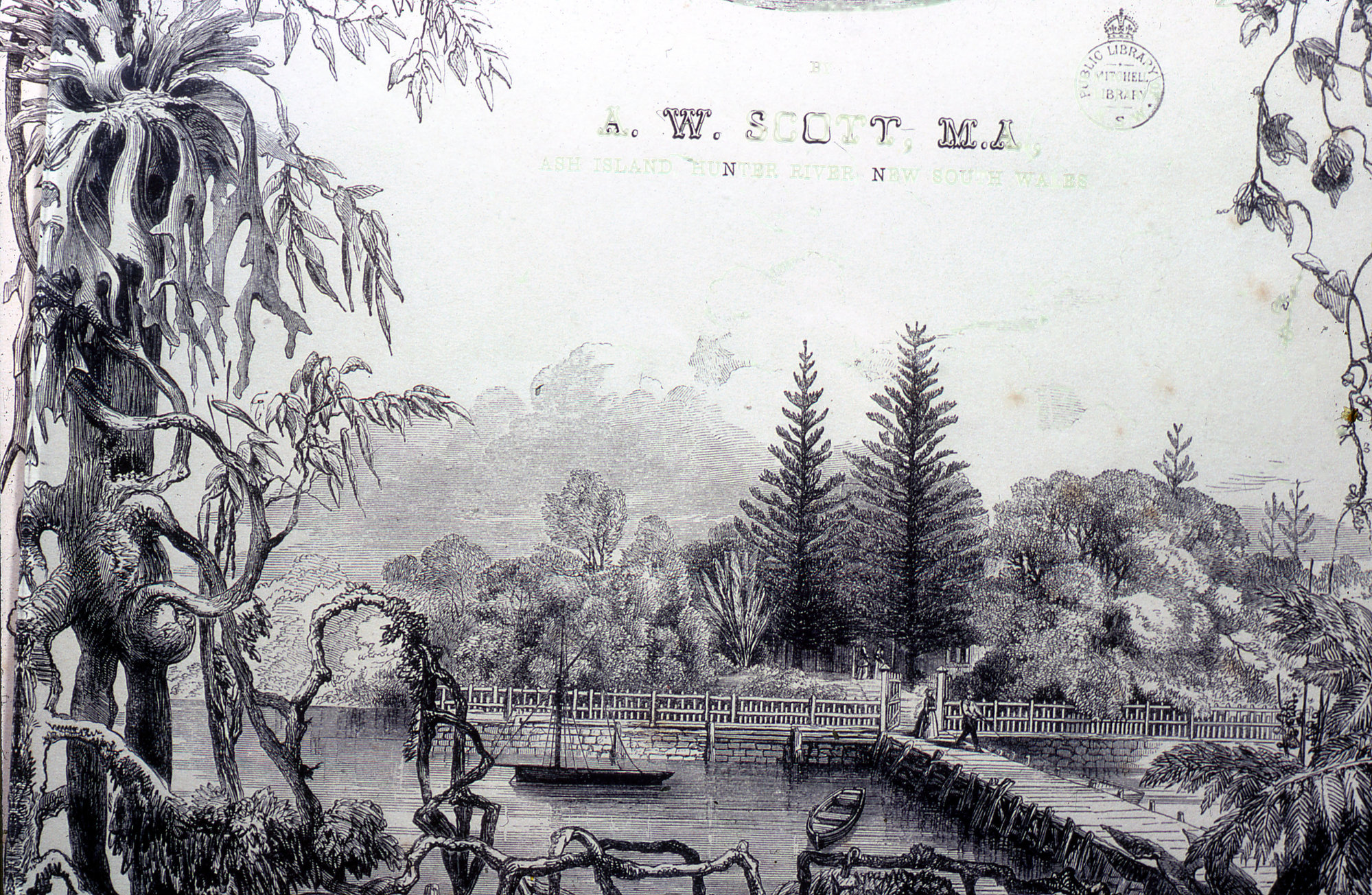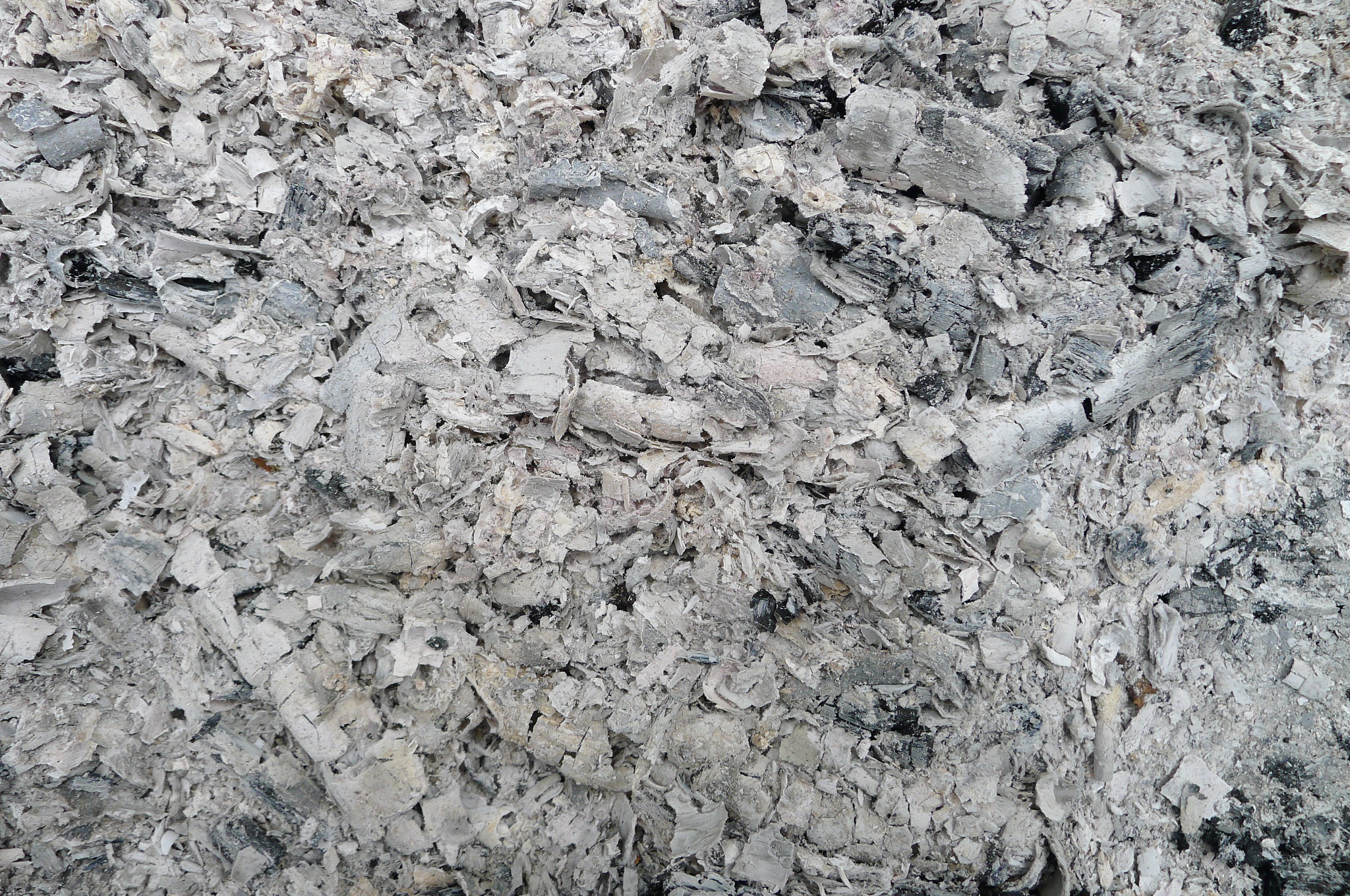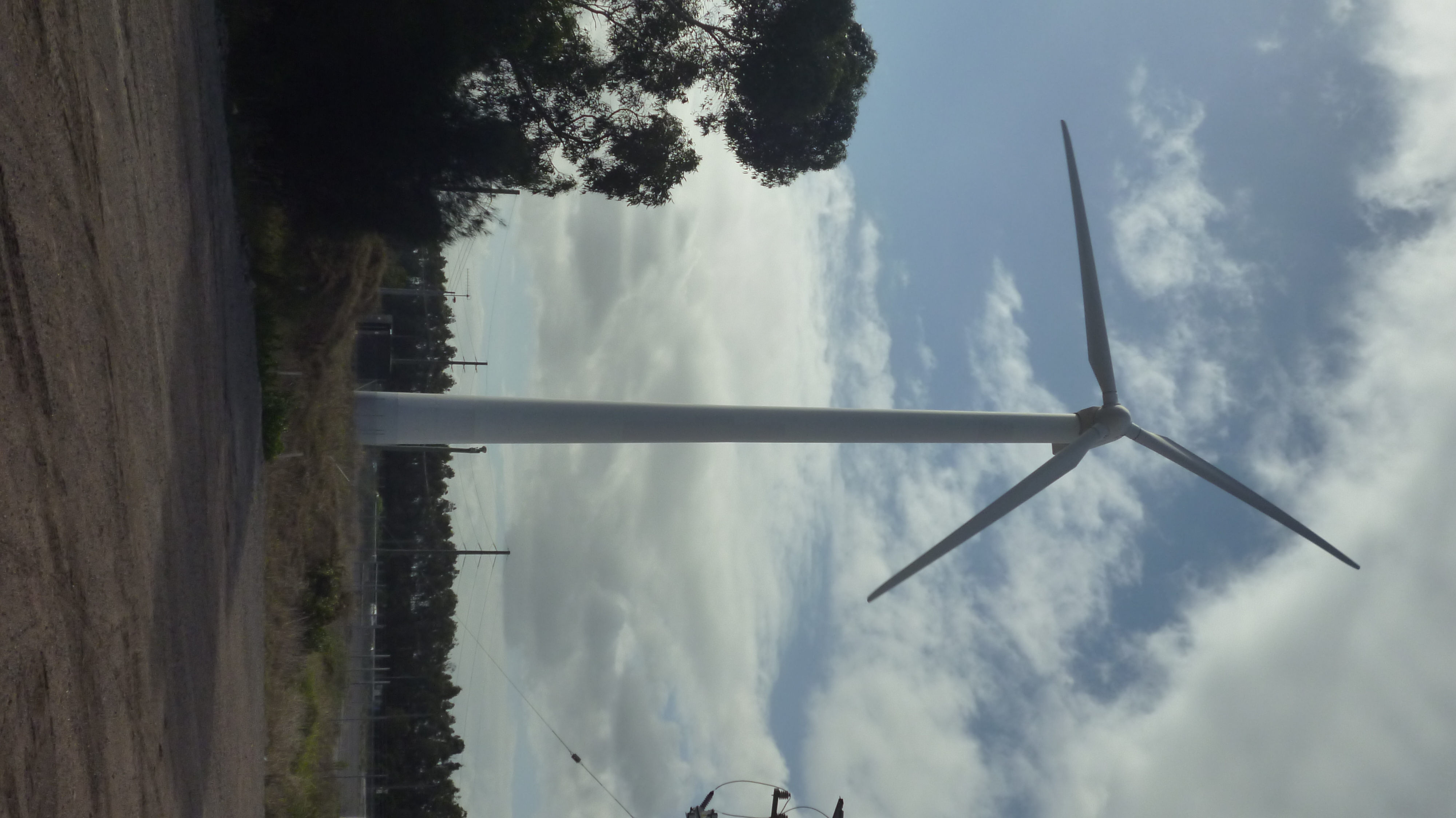|
Alexander Walker Scott
Alexander Walker Scott (10 November 1800 – 1 November 1883) was an Australian entomologist mainly interested in butterflies. Scott was the son of Dr Helenus and Augusta Maria Scott. He was born in Bombay, India and was educated at Bath Grammar School and Peterhouse, Cambridge, receiving a BA in 1822 and an MA in 1825. Scott was elected to the new Legislative Assembly, representing Northumberland and Hunter from 1856 to 1859, Northumberland 1858 to 1859 and Lower Hunter from 1860 to 1861. He supported the secret ballot and franchise extension. In 1861 he was nominated to the Legislative Council for life, but he took no part in it and resigned in 1866. A failed entrepreneur, he later became a prominent figure in the commercial establishment of the Newcastle region. He lived at Ash Island on the Hunter River with his wife, formerly Harriet Calcott, a seamstress, and his two daughters Harriet (1830–1907) and Helena Scott (1832–1910), both born in Sydney. At Ash Island ... [...More Info...] [...Related Items...] OR: [Wikipedia] [Google] [Baidu] |
Mumbai
Mumbai (, ; also known as Bombay — the official name until 1995) is the capital city of the Indian state of Maharashtra and the ''de facto'' financial centre of India. According to the United Nations, as of 2018, Mumbai is the second-most populous city in India after Delhi and the eighth-most populous city in the world with a population of roughly 20 million (2 crore). As per the Indian government population census of 2011, Mumbai was the most populous city in India with an estimated city proper population of 12.5 million (1.25 crore) living under the Brihanmumbai Municipal Corporation. Mumbai is the centre of the Mumbai Metropolitan Region, the sixth most populous metropolitan area in the world with a population of over 23 million (2.3 crore). Mumbai lies on the Konkan coast on the west coast of India and has a deep natural harbour. In 2008, Mumbai was named an alpha world city. It has the highest number of millionaires and billionaires among all cities i ... [...More Info...] [...Related Items...] OR: [Wikipedia] [Google] [Baidu] |
Ash Island 260338-max
Ash or ashes are the solid remnants of fires. Specifically, ''ash'' refers to all non-aqueous, non-gaseous residues that remain after something burns. In analytical chemistry, to analyse the mineral and metal content of chemical samples, ash is the non-gaseous, non-liquid residue after complete combustion. Ashes as the end product of incomplete combustion are mostly mineral, but usually still contain an amount of combustible organic or other oxidizable residues. The best-known type of ash is wood ash, as a product of wood combustion in campfires, fireplaces, etc. The darker the wood ashes, the higher the content of remaining charcoal from incomplete combustion. The ashes are of different types. Some ashes contain natural compounds that make soil fertile. Others have chemical compounds that can be toxic but may break up in soil from chemical changes and microorganism activity. Like soap, ash is also a disinfecting agent (alkaline). The World Health Organization recommends ash o ... [...More Info...] [...Related Items...] OR: [Wikipedia] [Google] [Baidu] |
Alexander Walker Scott
Alexander Walker Scott (10 November 1800 – 1 November 1883) was an Australian entomologist mainly interested in butterflies. Scott was the son of Dr Helenus and Augusta Maria Scott. He was born in Bombay, India and was educated at Bath Grammar School and Peterhouse, Cambridge, receiving a BA in 1822 and an MA in 1825. Scott was elected to the new Legislative Assembly, representing Northumberland and Hunter from 1856 to 1859, Northumberland 1858 to 1859 and Lower Hunter from 1860 to 1861. He supported the secret ballot and franchise extension. In 1861 he was nominated to the Legislative Council for life, but he took no part in it and resigned in 1866. A failed entrepreneur, he later became a prominent figure in the commercial establishment of the Newcastle region. He lived at Ash Island on the Hunter River with his wife, formerly Harriet Calcott, a seamstress, and his two daughters Harriet (1830–1907) and Helena Scott (1832–1910), both born in Sydney. At Ash Island ... [...More Info...] [...Related Items...] OR: [Wikipedia] [Google] [Baidu] |
Ferdinand Von Mueller
Baron Sir Ferdinand Jacob Heinrich von Mueller, (german: Müller; 30 June 1825 – 10 October 1896) was a German-Australian physician, geographer, and most notably, a botanist. He was appointed government botanist for the then colony of Victoria (Australia) by Governor Charles La Trobe in 1853, and later director of the Royal Botanic Gardens, Melbourne. He also founded the National Herbarium of Victoria. He named many Australian plants. Early life Mueller was born at Rostock, in the Grand Duchy of Mecklenburg-Schwerin. After the early death of his parents, Frederick and Louisa, his grandparents gave him a good education in Tönning, Schleswig. Apprenticed to a chemist at the age of 15, he passed his pharmaceutical examinations and studied botany under Professor Ernst Ferdinand Nolte (1791–1875) at Kiel University. In 1847, he received his degree of Doctor of Philosophy from Kiel for a thesis on the plants of the southern regions of Schleswig. Mueller's sister Bertha had be ... [...More Info...] [...Related Items...] OR: [Wikipedia] [Google] [Baidu] |
William Woolls
William Woolls (30 March 1814 – 14 March 1893) was an Australian botanist, clergyman and schoolmaster. Woolls, the nineteenth child of merchant Edward Woolls, was born at Winchester, England and educated at the grammar school, Bishop's Waltham, and at 16 years of age endeavoured unsuccessfully to obtain a cadetship in the British East India Company's service. A year later he emigrated to Australia, landing in Sydney on 16 April 1832, and was soon appointed an assistant-master at The King's School, Parramatta, having met William Grant Broughton—then Church of England Archdeacon of New South Wales—on the way out. About four years later he went to Sydney and maintained himself by journalism and giving private tuition. He was then for a period classical master at Sydney College, but resigned this to open a private school at Parramatta which he conducted for many years. He married Dinah Catherine Hall in 1838 and she bore a son and a daughter before dying in childbirth in 1844. ... [...More Info...] [...Related Items...] OR: [Wikipedia] [Google] [Baidu] |
Edward Pierson Ramsay
Edward Pierson Ramsay FRSEFLS LLD (3 December 1842 – 16 December 1916) was an Australian zoologist who specialised in ornithology. Early life Ramsay was born in Dobroyd Estate, Long Cove, Sydney, and educated at St Mark's Collegiate School, The King's School, Sydney, The King's School, Parramatta. He studied medicine from 1863 to 1865 at the University of Sydney but did not graduate. Career Although he never had had any formal scientific training in zoology, Ramsay had a keen interest in natural history and published many papers. In 1863 he was treasurer of the Entomological Society of New South Wales, he contributed a paper on the "Oology of Australia" to the Philosophical Society in July 1865, and when this society was merged into the Royal Society of New South Wales, he was made a life member in recognition of the work he had done for the Philosophical Society. In 1868 Ramsay joined with his brothers in a sugar-growing plantation in Queensland which, however, was not succes ... [...More Info...] [...Related Items...] OR: [Wikipedia] [Google] [Baidu] |
Thomas Sutcliffe Mort
Thomas Sutcliffe Mort (23 December 18169 May 1878) was an Australian industrialist who improved the refrigeration of meat. He was renowned for speculation in the local pastoral industry as well as industrial activities such as his Ice-Works in Sydney's Darling Harbour and dry dock and engineering works at Balmain. Businessman Mort was born in Bolton, Lancashire, England in 1816. In 1878, he was associated with the Australian Mutual Provident Society. In 1849, he was one of a committee, which funded a company to promote sugar growing at Moreton Bay. In 1850 Mort was a member of the Sydney Exchange Co, and in 1851 he was a director of the Sydney Railway Co. and was also involved in mining (gold, later also copper and coal) and other enterprises. In the 1850s, he opened Mort's Dock in Sydney, a business that was not as successful as he wished. In 1843, he established Mort & Company, in Sydney, and held the first wool auction there, which was the beginning the wool auction ... [...More Info...] [...Related Items...] OR: [Wikipedia] [Google] [Baidu] |
William Sharp Macleay
William Sharp Macleay or McLeay (21 July 1792 – 26 January 1865) was a British civil servant and entomologist. He was a prominent promoter of the Quinarian system of classification. After graduating, he worked for the British embassy in Paris, following his interest in natural history at the same time, publishing essays on insects and corresponding with Charles Darwin. Macleay moved to Havana, Cuba, where he was, in turn, commissioner of arbitration, commissary judge, and then judge. Retiring from this work, he emigrated to Australia, where he continued to collect insects and studied marine natural history. Early life Macleay was born in London, eldest son of Alexander Macleay, who named him for his then business partner, fellow wine merchant William Sharp. He attended Westminster School and Trinity College, Cambridge, graduating with honours in 1814. He was then appointed attaché to the British embassy at Paris, and secretary to the board for liquidating British claims on ... [...More Info...] [...Related Items...] OR: [Wikipedia] [Google] [Baidu] |
Gerard Krefft
Johann Ludwig (Louis) Gerard Krefft (17 February 1830 – 19 February 1881), a talented artist and draughtsman, and the Curator of the Australian Museum for 13 years (1861-1874), was one of Australia's first and most influential zoologists and palaeontologists. According to Macdonald, et al. (2007), Krefft "was among the first to raise the alarm" in relation to "the devastating effects" of the invasive species, such as "sheep, cats, etc., on native species". Also, along with significant others, such as the proprietor of the Melbourne ''Argus'', Edward Wilson, Krefft expressed considerable concern in relation to the effects of the expanding European settlement upon the indigenous population. In addition to his numerous scientific papers, his publications include ''The Snakes of Australia'' (1869), ''Guide to the Australian Fossil Remains in the Australian Museum'' (1870), ''The Mammals of Australia'' (1871), and ''Catalogue of the Minerals and Rocks in the Australian Museum' ... [...More Info...] [...Related Items...] OR: [Wikipedia] [Google] [Baidu] |
Lithography
Lithography () is a planographic method of printing originally based on the immiscibility of oil and water. The printing is from a stone (lithographic limestone) or a metal plate with a smooth surface. It was invented in 1796 by the German author and actor Alois Senefelder and was initially used mostly for musical scores and maps.Meggs, Philip B. A History of Graphic Design. (1998) John Wiley & Sons, Inc. p 146 Carter, Rob, Ben Day, Philip Meggs. Typographic Design: Form and Communication, Third Edition. (2002) John Wiley & Sons, Inc. p 11 Lithography can be used to print text or images onto paper or other suitable material. A lithograph is something printed by lithography, but this term is only used for fine art prints and some other, mostly older, types of printed matter, not for those made by modern commercial lithography. Originally, the image to be printed was drawn with a greasy substance, such as oil, fat, or wax onto the surface of a smooth and flat limestone plat ... [...More Info...] [...Related Items...] OR: [Wikipedia] [Google] [Baidu] |
Ash Island (NSW)
Kooragang () is the northernmost and largest suburb of the city of Newcastle, in the Hunter Region of New South Wales, Australia. Dominated by Kooragang Island, the eastern part of the suburb is primarily industrial, while the western part of the suburb consists of nature reserves. Covering an area of , at the , there were no people living in the suburb. Geography Kooragang extends from in the southeast, to the eastern bridge at Although known as the "Hexham bridge", there are actually two bridges crossing the Hunter River. Both are in the suburb of Tarro with the north and south ends of the bridges in Tomago and Hexham respectively. in the northwest, a distance of . Except for a small portion of land in Hexham, the north and south arms of the Hunter River forms Kooragang's borders. At its greatest, the suburb is approximately from southwest – northeast. Vehicular access to Kooragang is via three bridges. From the Tourle Street Bridge is the primary access to Kooragang, Sto ... [...More Info...] [...Related Items...] OR: [Wikipedia] [Google] [Baidu] |








.jpg)
